We sincerely hope that each of you, our readers, will enjoy and appreciate this article we present about these 7 Breathtaking Canyons and Gorges. It was certainly our great pleasure to compile the information for you. May it provide you with both education and increased awareness.
Certainly, however, these few features listed herein represent only a portion of the geological marvels found throughout the world. It’s our belief, though, that they serve as excellent representations of the wonders on earth. Check out some of our other articles for similar marvels.
Antelope Canyon
Antelope Canyon Facts
- Leading off this article about these 7 Breathtaking Canyons and Gorges comes the stunning formation named simply Antelope Canyon.
- The truly amazing site represents yet another of the many visually stunning geological formation in its part of the world. It also, quite understandably, now constitutes an extremely popular tourist destination in its part of the world.
- It further, and again, understandably, represents an extremely popular subject for photographers, both amateur and professional alike. Its unique and impressive physical characteristics make it unlike virtually any other spot of Earth.
- The site does, however, lie in a region consisting of extremely rugged and sometimes hazardous, terrain. This same region also happens to lie on what now constitutes lands belonging to Native Americans of the Navajo Nation.
- Since it also formed on what now represents native Navajo land, Antelope canyon is accessible only by guided tours. This fact, however, serves to provide the site with a certain measure of protection against the potential ravages of humans.
- This requirement further serves to ensure the safety of visitors to the natural marvel. During the rainy season, sporadic flash floods occur in the area. These have a tendency to arrive without warning, converting the passageways into a severe danger zone.
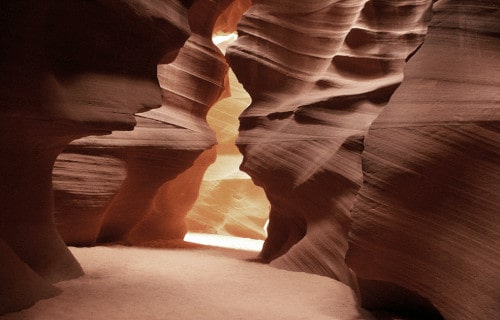
Antelope Canyon Physical Description
The mind-boggling Antelope Canyon truly dazzles the eye and befuddles the min of those who experience it firsthand. The formation does not do so, however, due to it sheer physical size, but because of the incredible nature of its physical structure.
Quite surprisingly, perhaps, the site manages to compress all this stunning beauty and distinctiveness into a relatively small structure. More precisely, this wonder of geological and meteorological forces only has a total length measuring roughly 1,9995 ft (607 m).
This becomes further impressive when one realizes that the incredible Antelope Canyon actually comprises two distinct sections. That very statistic helps to immediately distinguish it from the vast majority of other canyons situated around the world.
The first section bears the original Navajo name of Tsé bighánílíní, which roughly translates to the place water runs through rocks. The second section meanwhile, holds the original name of Hazdistazí, which roughly means Spiral Rock Arches, in English.
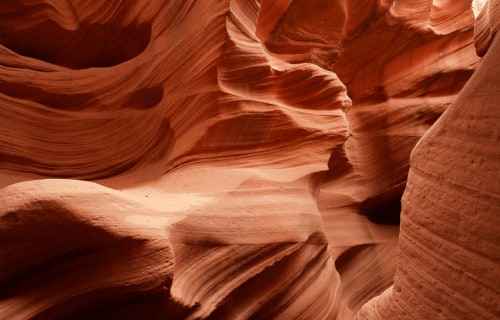
Antelope Canyon Location, Formation, and Hazards
The awesome splendor of Antelope Canyon formed in a part of the world well respected for its extreme geological beauty. That’s due to the fact that this site was molded by forces in what now constitutes the state of Arizona, in the United States, in North America.
Somewhat surprisingly, this particular canyon does not owe its formation to any volcanic or earthquake activity. This fact alone serves to even further distinguish it from the great majority of remarkable geological formations in this area of the continent.
To the amazement of some, long-term erosion of the native Navajo sandstone in the region formed the canyon into two distinct sections. This occurred over the course of thousands of years, primarily due to the flash floods the region remains prone to.
Also, a secondary erosive effect was that of desert winds funneling through the slot canyon throughout the years, with powerful force. Such occasionally forceful winds continue to affect the site sporadically, along with further flash flooding.
These continue to pose a danger in Antelope Canyon, even though safety measures exist. The U.S. Weather Service has a warning siren in place at the point where tours enter the canyons. But the flow rate of such floods through the two sections is unpredictable.
On August 12, 1997, prior to the installation of the siren, 11 tourists lost their lives in a flash flood in the Lower Canyon. No rain was falling at the site, but a locally heavy thunderstorm upstream dumped enormous quantities of water into the canyon in a matter of minutes.
Gorges du Tarn
Gorges du Tarn Facts
- The next tantalizing marvel appearing in this compendium of 7 Breathtaking Canyons and Gorges is the magnificent site known as the Gorges du Tarn.
- The deceptively simple sounding term it’s known by names a breathtaking canyon situated in a beautiful section of the Northern Hemisphere. This magnificent region of the world also stands out from similar areas for a fascinating and remarkable reason.
- That’s because it constitutes a unique location formed by an unusual combination of two separate geological forces. Due its unique positioning, this picturesque site further typically maintains a much milder climate than the rest of the surrounding region.
- This is accurate due to the fact that the beautiful area boasts a much milder winter seasons than the rest of the area. Additionally, the summers in the area tend to be somewhat warmer than those of the surrounding regions. This only adds to its appeal.
- Due to these generally comfortable conditions, the area comprising the Gorges du Tarn remains quite popular as a tourist destination. Yet, its popularity doesn’t end there. In fact, tourists and locals alike frequently enjoy numerous outdoor activities in the area.
- These include such activities as kayaking, hiking, spelunking, and rock climbing. But the region also boasts yet another incredible attraction to many, only adding to its already ample charm. A multitude of castles, many from the Middle Ages, also draw many.
Gorges du Tarn Physical Description
Perhaps most notably, the gorgeous geographical feature known as the Gorges du Tarn has some truly impressive physical characteristics. That’s not simply our own personal opinion, however. This somewhat bold statement holds fully true for several reasons.
Firstly, the truly magnificent site possesses a total length measuring roughly 33 mi (53 km). Secondly, the marvelous location further has a depth that varies only moderately over its entire length. That’s because its depth ranges from 1,312 – 1,669 ft (400 – 600 m).
The stunning beauty of the Gorges du Tarn further originated with the actions of the Tarn River, itself a wonderful work of Nature. Having its source on Mount Lozere, this strongly flowing water source eventually carved out the winding path of the picturesque canyon.
Although the exact age of the site remains undetermined, estimates of its age exist. Currently, those estimates place the origin of the site in the Quaternary Period, about 2.5 million years ago. Regardless of age, though, its natural beauty constantly amazes.
Gorges du Tarn Location, Formation, and Wildlife
Perhaps not surprisingly for some, the breathtaking Gorges du Tarn formed in a region of the world already well known for its great natural beauty. That’s due to the fact that the region of the globe in which this geological wonder formed consists of the continent of Europe.
More precisely still, the magical canyon formed in the amazing area that now constitutes the country of France. Further situated in the southern portion of the country, it also happens to lie within the borders of what’s now the departments of Lozère and Aveyron.
It also bears noting that the region in which this beautiful wonder of Nature formed predominantly consists of a very pliable mineral. That’s the relatively soft sedimentary rock limestone. This formed during the Mesozoic Era, between 252 – 66 million years ago.
The comparatively soft nature of the limestone enhanced the erosive effects of the water flowing through the site, accelerating its formation. However, the region also experienced a period volcanic activity, further affecting the nature of the surrounding landscape.
The stunning beauty of the lovely Gorges du Tarn is further augmented by the marvelous flora and fauna so prevalent to the area. Added to the various plant life common to the area, however, numerous cave-dweling species also inhabit the breathtaking site.
These intriguing endemic creatures include two species of small molluscs. Several types of bats also dwell in the caves located in the gorge. Astonishingly, though, several species of vultures even inhabit the region, as well as the recently reintroduced European Beaver.
Grand Canyon
Grand Canyon Facts
- The third geological marvel making its presence known in this listing of 7 Breathtaking Canyons and Gorges is the natural masterpiece appropriately known as the Grand Canyon.
- This is the absolutely breathtaking marvel of Nature understandably known by the name given above. It remains perhaps the best known feature of its kind in the world. Despite its well-deserved reputation, however, it’s not the longest of its kind.
- Its grandeur and sheer size nevertheless leave those who experience it firsthand shaking their heads at the majesty of the site. But the local Native American tribes have other names for it in their native tongues. These have been used for many centuries.
- In the native Navajo language, it’s called Bidááʼ Haʼaztʼiʼ Tsékooh. Among the Yavapai, though, this incredible site goes by the name of Wi:kaʼi:la. Meanwhile, the Hopi people employ the name of Ongtupqa for this true wonder of natural forces.
- Regardless of the name used to refer to it, though, some things remain the same. For one thing, the aptly-named Grand Canyon represents one of the most widely recognized geological feature found anywhere on the planet. And that’s as it should be.
- This site additionally quite literally provides a window into the past unlike anything found anywhere else. That’s due to the fact that geologists have the ability to study the work of around 2 billion years of geological processes in the rocks.
Grand Canyon Physical Description
The sheer scale of the awesome Grand Canyon can make it difficult to fully appreciate. Simply quoting statistics cannot adequately convey the proper impression of this geological marvel. We offer them here, though, as a beginning of appreciation of its magnitude.
Firstly, its sheer length often represents a staggering number to contemplate for the casual learner. That’s due to a lack of proper perspective with which to consider it. This astounding site further measures a grand total of roughly 277 mi (446 km) in length.
Secondly, its other dimensions remain equally mind-numbing. Take its width, for example. While this quite naturally varies constantly along its length, this remains enormous in even the narrowest areas. But, that’s because at its widest it attains a width of 18 mi (29 km).
Thirdly, its depth only adds to the otherworldly air of the incredible Grand Canyon. Though it’s not the deepest such feature in the world, by far, it’s nevertheless remarkably impressive. While the depth naturally varies, it reaches a maximum of 6,093 ft (1,857 m) in places.
Grand Canyon Location, Formation, and Geology
The gorgeous Grand Canyon formed in a distinctive region of the Northern Hemisphere already renowned for its natural beauty. This principle extends to the highly numerous beautiful, though relatively harsh and sometime stark, landscapes so common in that region.
That holds true due to the fact that this astonishing feature of geology formed in a region of what now constitutes the United States, in North America. More precisely, the gigantic canyon runs through an extensive section of the state that bears the name of Arizona.
Plus, it also shares this region with other natural features. These include the aptly-named Grand Canyon National Park, the Kaibab National Forest, and the Grand Canyon-Parashant National Monument. The canyon itself also contains the equally stunning Havasu Falls.
Incredibly, the eye-opening Grand Canyon forms part of the Colorado River Basin. As such, its creation serves as the perfect testament to the power of erosion. Admittedly, however, in its case, this process required a period estimated by geologists at roughly 70 million years.
Its unique nature and sheer size make it a location of unequaled importance to geologists. That’s due to the presence of sections of deposits over many hundreds of millions of years. In fact, one area of deposits, known as the Vishnu Schist, measures 2 billion years old.
Kings Canyon
Kings Canyon Facts
- The next location featured in this article about 7 Breathtaking Canyons and Gorges is the majestic site best known by the moniker of Kings Canyon.
- This magnificent geological feature, with its stark, rugged beauty is best known by this aptly applied term. Though certainly not the best known canyon on earth, this marvel nevertheless garners a great deal of interest from tourists to its region.
- Naturally, the local Indigenous Peoples long knew of the existence of this impressive natural feature. Exactly when they first found it, though, presently remains undetermined. Archaeological research into this mystery continues to this time.
- Discovery of the stunning canyon by non-natives only occurred in comparatively recent times, however. The British-born explorer, Ernest Giles, holds the credit for being the first Eiropean to view the site. This he managed during his explorations in 1872.
- The breathtaking Kings Canyon presently represents a moderately popular tourist destination in its region. This holds true despite its relatively remote location. The ruggedness of the surrounding terrain further serves to dissuade many visitors.
- This fact, though, helps to maintain it in its natural state. Part of the remarkable formation also forms a sacred site to the local indigenous population. Visitors to the spot are therefore strongly discouraged from straying from designated paths.
Kings Canyon Physical Description
The awe-inspiring beauty of Kings Canyon exists regardless of sheer physical size. That’s because, while it easily impresses all who visit it, the site doesn’t do so due to this aspect of its nature. In these terms, it’s relatively small. Nature, though, doesn’t care about such things.
More precisely, the amazing scenery provided by this canyon is concentrated into a total length of only about 0.62 mi ( 1 km). Yet the geological processes that created this masterpiece crammed a veritable cornucopia of natural marvels into that dazzling package.
Although certainly not as deep as some similar sites around the world, it nonetheless boasts some respectable measurements. Across its length, its walls reach an average height of roughly 328 ft (100 m). At its deepest point, however, this stretches to about 656 ft (200 m).
Mesmerizing Kings Canyon also provides views to enthrall visitors with its distinctive colors. These primarily consist of multiple shades of red and orange. Shades of brown and ochre also appear, as well. These colors all arise from the nature of the surrounding geology.
The marvels don’t end there, though. Yet another part of this product of time and natural processes manifests in the presence of numerous rock domes. Weathered by time, wind, and water, these strongly resemble similar features found in the awesome Bungle Bungles.
Kings Canyon Location, Formation, and Ecology
The eye-catching gorge so intriguingly named Kings Canyon formed in a part of the world more commonly known for its abundance of distincitve fauna. The same location nevertheless does serve as home to its own share of geological beauty, as well.
To be more exact, however, it formed as part of what now forms the continent of Australia. There, it lies at the western end of the George Gill Range. For those familiar with the area, this places it approximately 201 mi (323 km) to the southwest of the town of Alice Springs.
Research conducted by geologists indicates that the site formed around 400 million years ago. The local stone principally consists of a specific type of mineral. It’s best known to professionals as Mereenie Sandstone. Forces deposited that here at the time of its creation.
Evidence further indicates that the underlying strata was deposited in two distinctly separate events. The indication of this can be observed as a thin layer of purple mudstone, or shale, clearly separating the two. That also indicates environmental changes at the time.
Despite the seeming harshness of the local environment, Kings Canyon plays host to an abundance of life. This includes both flora and fauna. Astonishingly, to some, though, a high number of plants species appear here. This even includes trees, such as the ghost gum.
Various mammals and small reptiles also make this site their home, as well. But the majority of fauna found here consists of smaller bird species. These include such avian species as the Zebra Finch, the Gray-Headed Honeyeater, the Spinefex Pigeon, and the Peregrine Falcon.
Flume Gorge
Flume Gorge Facts
- The fifth creation of geological processes in this compilation of 7 Breathtaking Canyons and Gorges we have compiled for you goes by the name of Flume Gorge.
- The somewhat understated term applied to it serves as the name of a stunning, lesser-known natural geological formation. While not widely known outside of its immediate area, it nonetheless fully deserves its own degree of merit and appreciation.
- It’s currently not officially known if the local Native American population knew of its existence in past ages. That’s only due to a lack of formal information on the subject. Given their long-term presence in the area, though, it seems likely they knew of it.
- The first recorded discovery of the site by a non-native, however, took place in 1808. That’s because, at that time, an elderly, local resident settler came upon it accidentally, while fishing. The intrepid 93-year-old was known as “Aunt” Jess Guernsey.
- In modern times, the remarkable Flume Gorge understandably became a popular recreational destination among locals. Subsequently, the gorgeous location became part of a small protected site. That’s the lovely Franconia Notch State Park.
- Due to this, it’s now only viewable by paid visitors to the site. This allows for a modicum of protection for the feature, from the depredations of unattended visitors. Concerted efforts also remain underway to preserve the gorge in its pristine condition.
Flume Gorge Physical Description
The magnificent formation known simply as Flume Gorge perfectly proves a well-known observation about Nature. That’s the belief by some that natural forces place no importance on relative size when it comes to the amount of beauty imbued within them.
That statement’s true since this naturally formed canyon actually remains rather small, compared to many such features around the world. But it packs a lot into that small space. Indeed, its confines also contain several smaller features, themselves worthy of some note.
This natural small canyon extends comparatively straight for approximately 800 ft (240 m). Given its short length, its walls further rise to relatively great heights. This measurement varies along its length, however. These range in height from roughly 70 – 90 ft (21 – 27 m).
Breathtaking Flume Gorge isn’t for those few visitors who suffer from claustrophobia, though. That’s because it’s also quite narrow, considering its length. Across the totality of its length, the distance between the sides only ranges from about 12 – 20 ft (3.7 – 6.1 m)!
The location also boasts its own stunning, if small, waterfall. Appropriately named Avalanche Falls, this formed in recent times. That formation occurred due to the actions of a powerful storm in 1883. The cascade plunges 45 ft (13.6 m) at the entrance to the gorge.
Flume Gorge Location, Formation, and Ecology
Flume Gorge formed in a portion of the world known for its abundance on natural beauty. That’s due to the fact that it lies in a portion of the continent of North America. Though the region’s better known for its botanical beauty, it also hoasts geological ones as well.
More precisely, however, the wondrous site lies within the confines of the United States. There, its formation placed it in the far northeastern portion of the country. This geological masterpiece further sits near the base of Mount Liberty, in the state of New Hampshire.
It’s also surprisingly old. The origins of this work of geological forces reach all the way back roughly 200 million years. The specific rock of the region, known as Conway granite, began as deeply buried molten rock. This also broke into vertical fractures as it cooled.
Other forces of Nature subsequently acted to contribute to its formation. Erosion expanded the fractures, widening them. This led to water being allowed in, which further expanded the structure. Eventually, it reached the general dimensions it possesses at this time.
Due to its nature, few species make their home within the confines of Flume Gorge. Yet life always clings wherever it can. A scattering of trees managed to gain a foothold in cracks along the steep walls of the canyon. Moss and ferns also appear in scattered locations.
Because of the presence of the trees and ferns, a variety of locally prevalent insect species naturally appear as well. Various varieties of birds also make their homes in the branches of the trees. A handful of aquatic invertebrates and fish also live in the gently flowing stream.
Blyde River Canyon
Blyde River Canyon Facts
- The next fabulous location listed in this presentation of 7 Breathtaking Canyons and Gorges is the remarkable site named the Blyde River Canyon.
- To the surprise of some, the truly stunning formation stands out from other such features throughout the world for several reasons. Perhaps chief among these reasons remains the amazing fact that the site ranks as one of the largest known canyons in the world.
- In addition to this status, this remarkable location also represents one of the largest examples of a specific type of canyon, known as a green canyon. The inhabitants of the continent it formed on further consider it to be one of the great natural wonders of that continent.
- Its rather distinctive name only further serves to distinguish this geological marvel from others. This particular moniker derives from a Dutch expedition that took place during the early portion of the 18th century. In that language, the word Blyde translates as either happy or glad.
- Impressively, this gorgeous site also serves as the cornerstone of the wonderful Blyde River Canyon Nature Reserve. The canyon further serves as home to a wide variety of flora and fauna. Rather understandably, the location now constitutes and extremely popular tourist site.
Blyde River Canyon Physical Description
Likely the most notable thing about the truly magnificent Blyde River Canyon remains its sheer physical size. That holds true due to the fact that this masterpiece of Nature stretches for an overall length of roughly 3.1 mi (50 km). The feature also boasts a maximum depth of about 2,625 ft (800 m).
Its overall physical measurements, however, do not represent its only claim to magnificence. That’s because, among other things, it also possesses some truly incredible cliffs. In point of fact, these form some of the highest and most precipitous such features found in any canyon on the entire planet.
The breathtaking Blyde River Canyon actually represents one wonder of Nature that contains many others, as well. That’s because the gorgeous canyon also gives up numerous natural marvels bearing their own names. They also represent many distinct types of natural features.
Such wonders include such wonders as the Kadishi Tufa Waterfalls. These are the second highest of their kind in the world. These include features bearing such names as The Pinnacle, God’s Window, Bourke’s Luck Potholes, the Three Rondavels, and the Echo Caves. each forms a different type of feature.
Blyde River Canyon Location, Formation, and Life
The awesome wonder of Nature known as the Blyde River Canyon formed in what now constitutes the country of South Africa, on the continent of Africa. More specifically, it lies within the boundaries of the province of Mpumalanga. This location sits in the eastern portion of the country.
The fabulous canyon originally formed as part of the ancient super continent known as Gondwanaland. This gigantic formation eventually broke apart around 200 million years ago. Subsequent to this, what had previously been a very deep undersea trench became the canyon we see today.
Today, the beautiful and incredible location possesses a remarkably lush environment within its boundaries. As a result, it serves as home to numerous species of mammals, birds, and fish. Some of these species are rarely ever seen, thus it serves as a haven for these, and other species.
The mammals found within its boundaries include the lovely Vervet Monkey. But the great majority of creatures found here consists of birds, including the amazing Crowned Eagle. Amazingly, reptilian species such as the crocodile also appear here in relatively large numbers.
Verdon Gorge
Verdon Gorge Facts
- Closing out this collection of our choices to represent 7 Breathtaking Canyons and Gorges we present another marvel from France, the Verdon Gorge.
- The absolutely breathtaking formation easily stands out from many technically similar geological features for its great beauty. That fact quickly becomes readily apparent to anyone fortunate enough to visit the stunning creation of natural forces.
- In point of fact, due to that same natural wonder, it also routinely ranks among the most splendid and beautiful of such locations in its area. Given the part of the world in which it formed however, that statement says quite a bit about its beauty.
- The magnificent work of Nature easily earns this distinction for several reasons. But, the most defining, and unforgettable, characteristic of this particular canyon remains the startlingly turquoise-blue coloring of the water that flows through the site.
- Indeed, this gorgeous color lends itself easily to poetic and artistic descriptions of the site. The hue for which the site remains best-known also serves another purpose. That’s because it represents the source of the name of this remarkable geological feature.
- Due to its stunning beauty, as well as its proximity to other popular tourist regions, this product of vast spans of time holds yet another distinction. That’s because the site has, wholly understandably, of course, become an extremely popular destination.
Verdon Gorge Physical Description
Perhaps most notably, the mesmerizing Verdon Gorge markedly separates itself from similar features around the world. This holds true due to the fact that it not only boasts great beauty, but it also represents a comparatively long example of its type of feature.
This occurs as a consequence of the fact that this magnificent site boasts an overall length that measures about 15.5 m (25 km). In places, furthermore, the gorgeous canyon also displays an incredibly impressive maximum depth, measured at roughly 2,300 ft (700 m).
Its own geological structure additionally aids in the coloring of the water that flows through it, though. That’s because the walls along its length primarily consist of the relatively soft mineral limestone. The slow erosion of these serves to enhance the natural color.
Yet not all of the natural wonders of the truly breathtaking Verdon Gorge originate within its boundaries, however. That’s because the gorgeous river which flows through the location originates high in the Trois Eveches mountain range, itself a remarkably beautiful site.
Also, the magnificent work of Nature holds yet another attraction for visitors. At its end, this remarkable example of the beauty of Nature flows into a man-made lake. This addition to the work of Nature sits near the French community of Sainte-Croix-du-Verdon.
Verdon Gorge Formation, History, and Uses
This stunning marvel of Nature formed in a region of the globe already well known for its vast array of natural marvels. That’s due to the fact that this marvelous product of natural processes formed in what now constitutes the beautiful country of France, in Europe.
The truly magnificent canyon further began its formation long ago, long before mankind came onto the scene to remark on it. That holds true due to the fact that evidence indicates it formed more than 200 million years ago, during the earth’s Triassic Period.
Quite unfortunately, it also remains unclear when mankind first discovered the wondrous site. However, the first recorded mention of the beautiful gorge occurred in the year 1782. Further, by the mid-1800’s it featured prominently in tour guides of the day.
This remarkable gorge also currently aids mankind in ways other than pleasing the eye. The location now serves as a source of renewable electric power for the region. An amazing total of 5 hydroelectric dams have been constructed in various parts of the gorge.
In addition, the stunning natural gorge understandably now represents an extremely popular destination, for both local tourists and non-locals alike. Many people also readily come for such activities as hiking along its banks and kayaking its gorgeous length.
To no great surprise, though, the nature of the awesome canyon also presents one more feature to attract visitors. Each year, vast numbers of rock-climbers are drawn to the more than 1,500 routes the astounding walls of the Verdon Gorge offer to the adventurous.
7 Breathtaking Canyons and Gorges
We sincerely hope that you completely enjoyed reading, and hopefully learning from, this article created about these 7 Breathtaking Canyons and Gorges. It’s also our sincere hope that doing so has left you with either a new or renewed appreciation for such wonders of Nature.
Unfortunately, however, many of the similar structures around the world now find themselves facing strong threats to their continued undamaged existence. Many of those dangers, in fact, stem from the actions of mankind. We must do all we can to protect and preserve them all.
Check out our other articles on 4 Wondrous European Woody Shrubs, The Mighty Tornado, 5 Tantalizing Mammals of Tasmania, Wonderful Wild Cats of the World, 7 Intriguing Island Reptiles
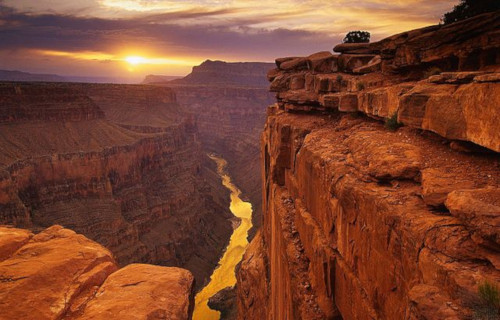
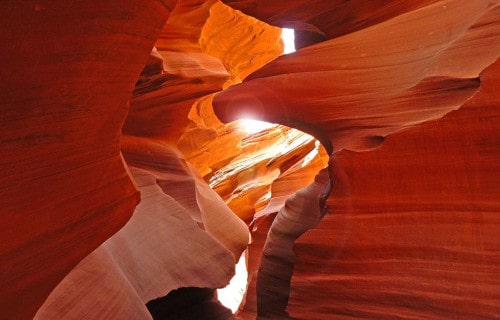
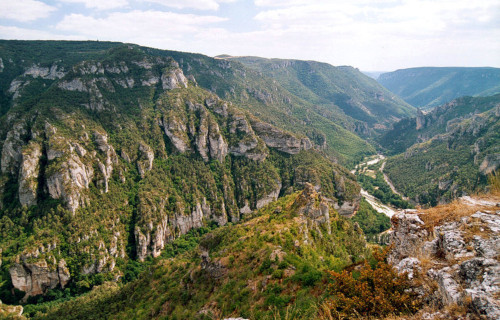
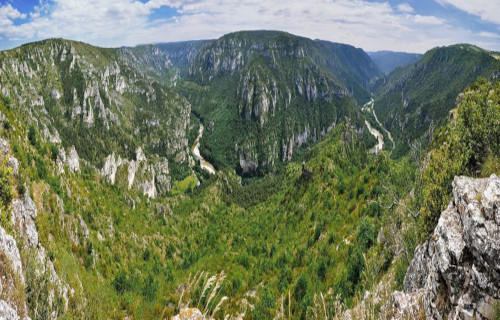
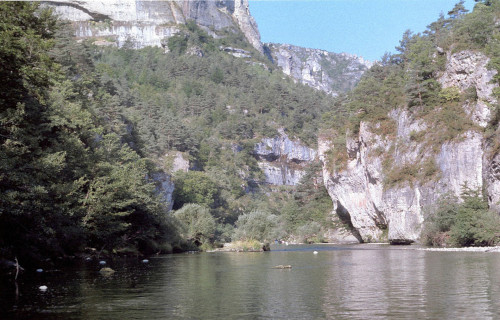
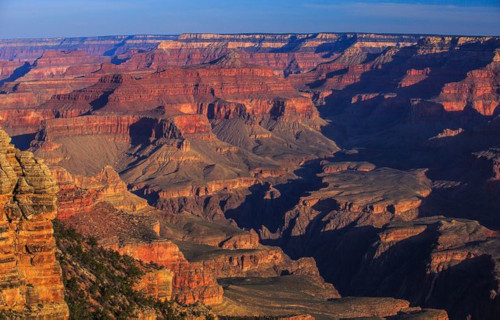
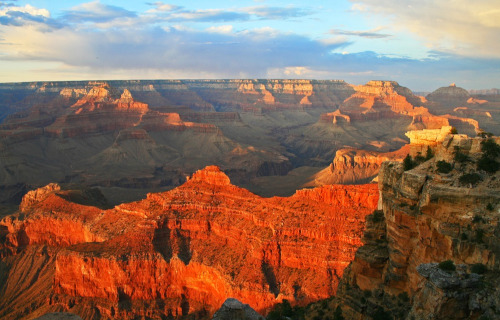
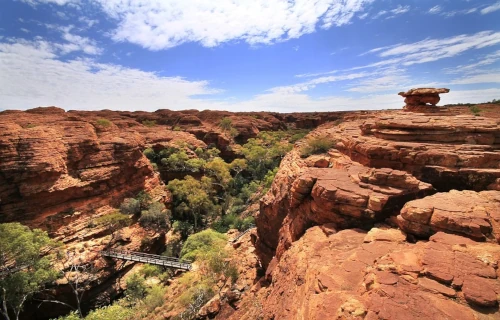
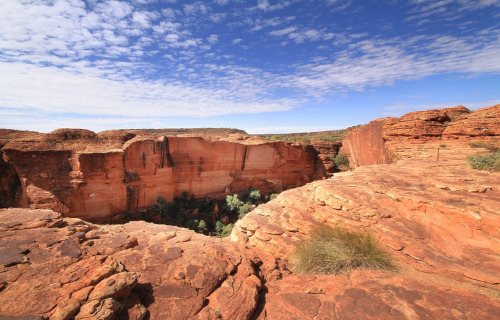
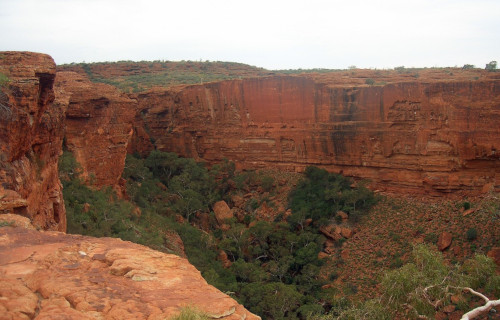
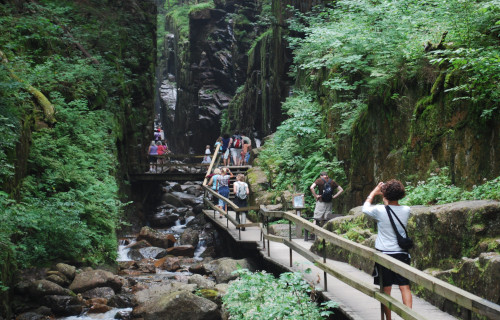
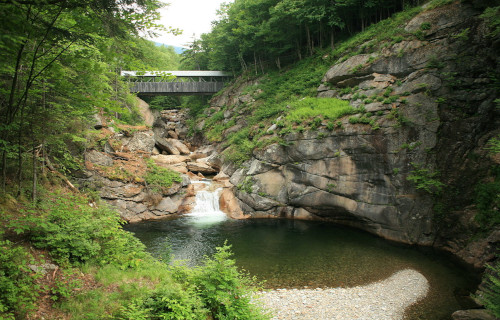
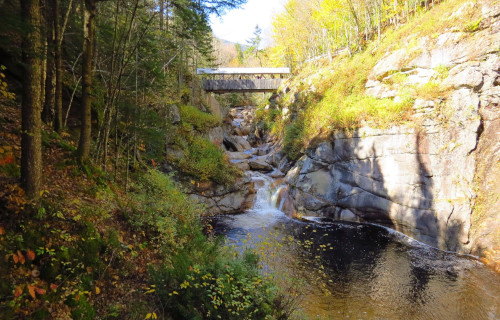
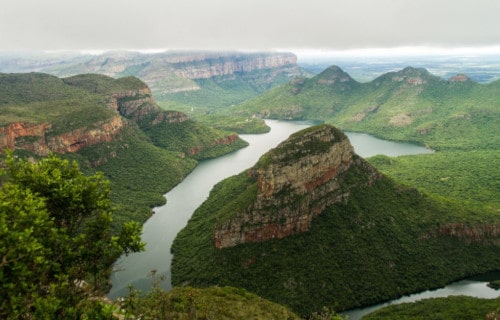
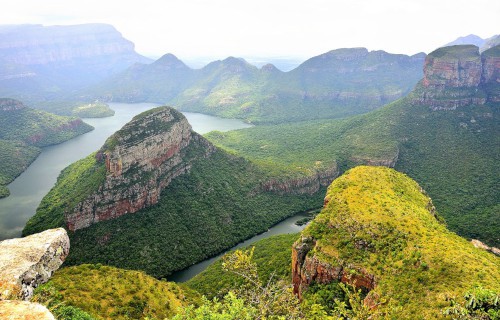
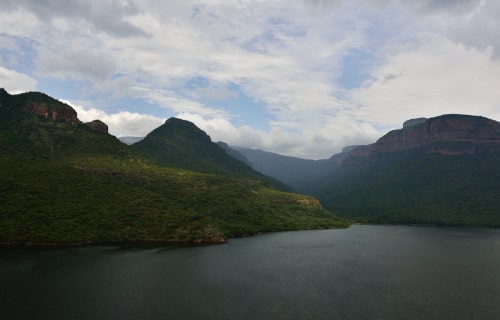
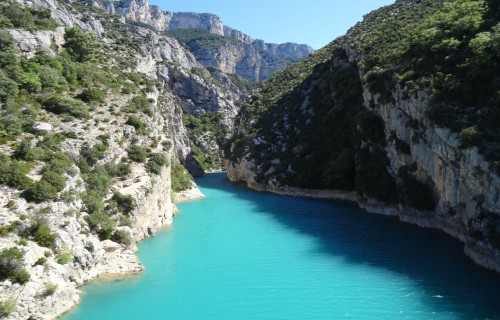
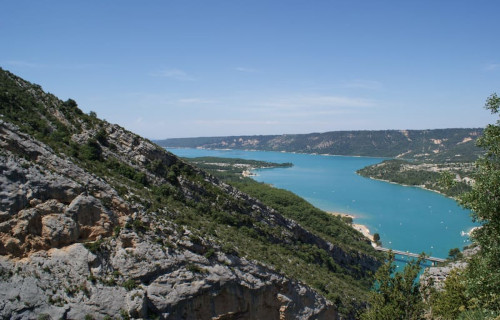









Leave a Reply